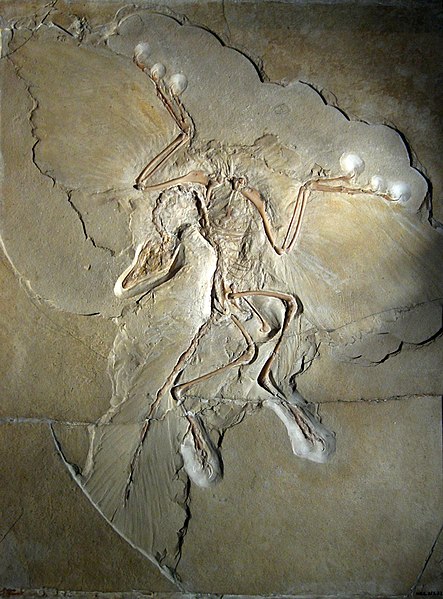A transitional fossil is any fossilized remains of a life form that exhibits traits common to both an ancestral group and its derived descendant group. This is especially important where the descendant group is sharply differentiated by gross anatomy and mode of living from the ancestral group. These fossils serve as a reminder that taxonomic divisions are human constructs that have been imposed in hindsight on a continuum of variation. Because of the incompleteness of the fossil record, there is usually no way to know exactly how close a transitional fossil is to the point of divergence. Therefore, it cannot be assumed that transitional fossils are direct ancestors of more recent groups, though they are frequently used as models for such ancestors.
Traditional spindle diagram showing the vertebrates classes "budding" off from each other. Transitional fossils typically represent animals from near the branching points.
Archaeopteryx is one of the most famous transitional fossils and gives evidence for the evolution of birds from theropod dinosaurs.
A. afarensis - walking posture
Reconstruction of Pakicetus
Archaeopteryx, sometimes referred to by its German name, "Urvogel" is a genus of bird-like dinosaurs. The name derives from the ancient Greek ἀρχαῖος (archaīos), meaning "ancient", and πτέρυξ (ptéryx), meaning "feather" or "wing". Between the late 19th century and the early 21st century, Archaeopteryx was generally accepted by palaeontologists and popular reference books as the oldest-known bird. Older potential avialans have since been identified, including Anchiornis, Xiaotingia, and Aurornis.
Archaeopteryx
The single feather
Cast of the Maxberg Specimen
Eichstätt Specimen, once considered a distinct genus, Jurapteryx







